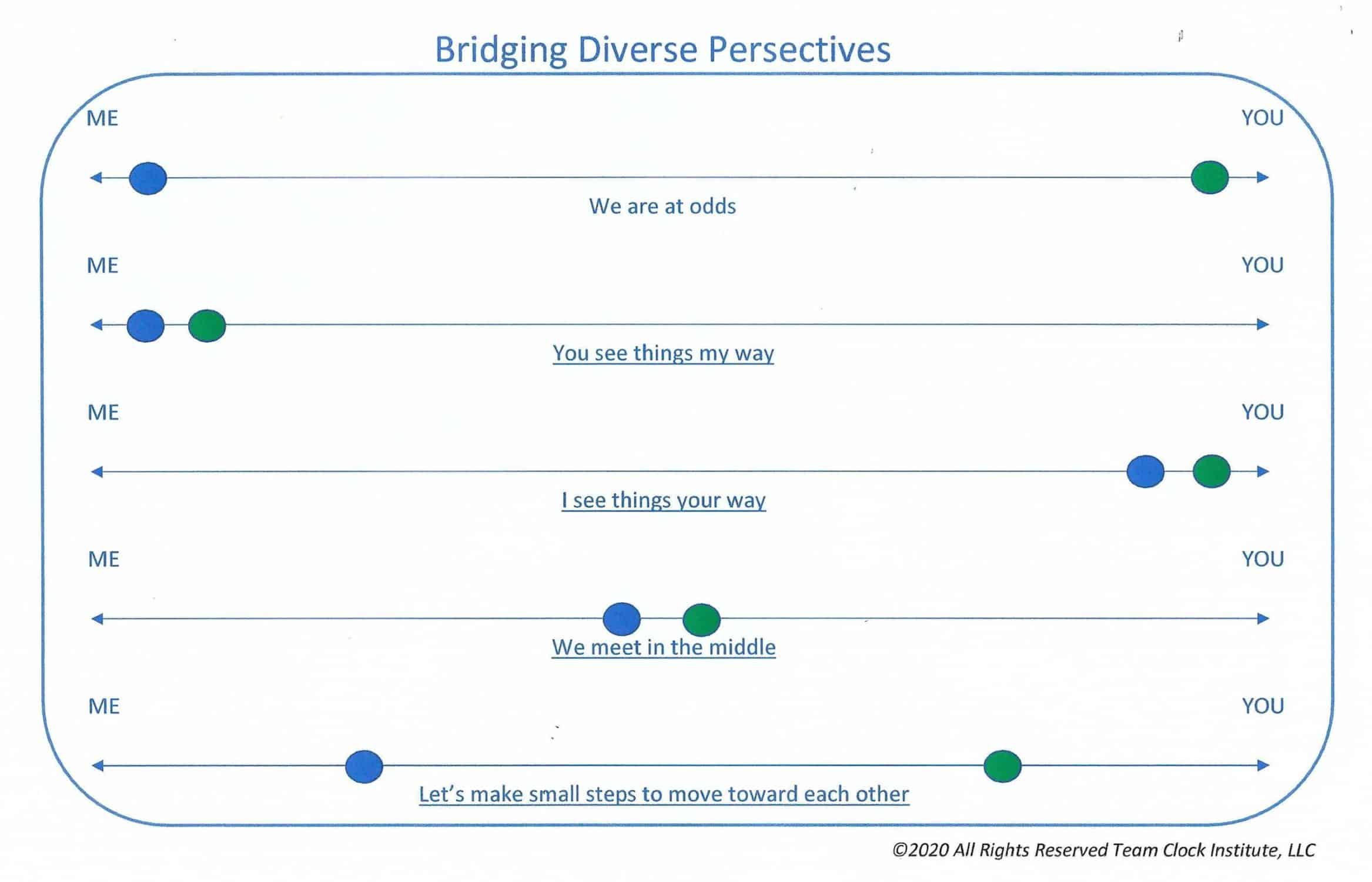Begin by assuming everyone on the team comes from mindsets fueled by different histories, experiences and biases. Each teammate’s internal world makes him or her feel like he or she is at the center of the universe. Each teammate, therefore, guards his or her perspective with fervor.
Now, examine each relationship on the team as a negotiation of perspective sharing where the objective is simply understanding. You don’t have to agree. You don’t have to compromise. You don’t have to see things my way. You just have to understand. Below are five ways to view differences in perspective.

We are at odds: This is the traditional “agree to disagree” model. The most productive way to make this chasm work is for both parties to unconditionally respect the opposite viewpoint based on the legitimate diversity of history, experience and bias.
You see things my way: This happens when dialogue opens new pathways of understanding for your partner. Often, this result is accompanied by an acknowledgement like, “Hmmm… I’ve never thought about it that way before.”
I see things your way: This requires that you get behind the eyes of your partner and embrace the uniqueness of his or her history, experience and bias. Often, this result is accompanied by an acknowledgement like, “Hmmm… if I had grown up in your circumstances, I would feel the same way.”
We meet in the middle: It’s common to believe that compromise is the objective of most differences of opinion. It’s rarely the outcome other than when parties are splitting up assets. Typically, meeting in the middle occurs when dialogue results in a common goal. The destination achieves consensus even though the paths of the journey remain diverse.
Let’s make small steps to move toward each other: This is usually the most likely outcome when diversity is embraced as a strength. There is no expectation that the other person becomes you. No one has to give up being the center of their own universe. Instead, everyone has to accept that each teammate has their own universe and that coexistence is strengthened by those differences.
Team interactions and the unique dynamics that unfold in relationships are complex and challenging. The stress of managing conflict often causes teammates to either withdraw or become aggressive. The dialogue alternative can be a healing factor with clear ground rules. With a nod to Crucial Conversations methodology (Patterson, etal 2002), consider these guidelines:
- Commitment to participate constructively, not destructively: This is not target practice. Our objective is not to vent about decades of past wrongs. If you contribute, the intent is to elevate the wellness of the communication.
- Be respectful and appreciate the integrity of each person’s perspective: Everyone feels the way they do for a reason. No one must justify their emotions. The goal is for everyone to see through each other’s eyes. Each person should be able to describe what it’s like to be everyone else.
- Own your contribution to both conflict and resolution. If you wrong someone or are wronged by someone, both parties are accountable to naming the value that was violated and how things should be fixed (e.g. apology, commitment to do better in the future, etc.).
- Deal directly with the person with whom there is conflict: Avoid gossip and tattling by using one-to-one discussion to resolve differences. Strengthen each relationship. Grow conflict management skills if they need strengthening.
- Be forward-looking and future-oriented: The goal is to define the basic values that form the foundation of how everyone will treat each other moving forward. This becomes a value-based code-of-conduct where everyone agrees to abide by it and everyone is empowered to respectfully request a repair if someone says or does anything that violates the agreement.
So, invite the conflict. Celebrate the differences. Set the ground rules. Build some bridges.

